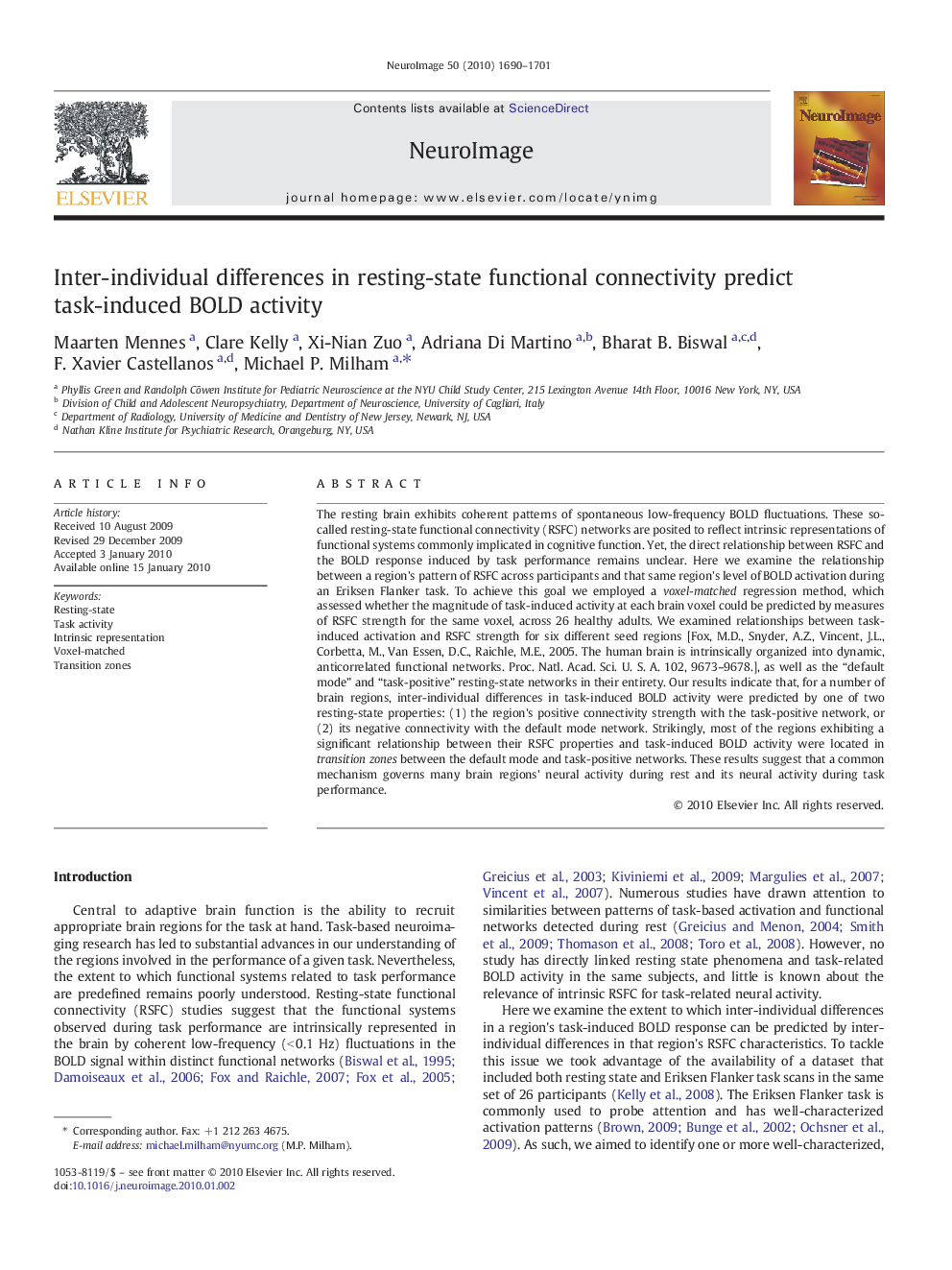| کد مقاله | کد نشریه | سال انتشار | مقاله انگلیسی | نسخه تمام متن |
|---|---|---|---|---|
| 6037357 | 1580942 | 2010 | 12 صفحه PDF | دانلود رایگان |
عنوان انگلیسی مقاله ISI
Inter-individual differences in resting-state functional connectivity predict task-induced BOLD activity
دانلود مقاله + سفارش ترجمه
دانلود مقاله ISI انگلیسی
رایگان برای ایرانیان
موضوعات مرتبط
علوم زیستی و بیوفناوری
علم عصب شناسی
علوم اعصاب شناختی
پیش نمایش صفحه اول مقاله

چکیده انگلیسی
The resting brain exhibits coherent patterns of spontaneous low-frequency BOLD fluctuations. These so-called resting-state functional connectivity (RSFC) networks are posited to reflect intrinsic representations of functional systems commonly implicated in cognitive function. Yet, the direct relationship between RSFC and the BOLD response induced by task performance remains unclear. Here we examine the relationship between a region's pattern of RSFC across participants and that same region's level of BOLD activation during an Eriksen Flanker task. To achieve this goal we employed a voxel-matched regression method, which assessed whether the magnitude of task-induced activity at each brain voxel could be predicted by measures of RSFC strength for the same voxel, across 26 healthy adults. We examined relationships between task-induced activation and RSFC strength for six different seed regions [Fox, M.D., Snyder, A.Z., Vincent, J.L., Corbetta, M., Van Essen, D.C., Raichle, M.E., 2005. The human brain is intrinsically organized into dynamic, anticorrelated functional networks. Proc. Natl. Acad. Sci. U. S. A. 102, 9673-9678.], as well as the “default mode” and “task-positive” resting-state networks in their entirety. Our results indicate that, for a number of brain regions, inter-individual differences in task-induced BOLD activity were predicted by one of two resting-state properties: (1) the region's positive connectivity strength with the task-positive network, or (2) its negative connectivity with the default mode network. Strikingly, most of the regions exhibiting a significant relationship between their RSFC properties and task-induced BOLD activity were located in transition zones between the default mode and task-positive networks. These results suggest that a common mechanism governs many brain regions' neural activity during rest and its neural activity during task performance.
ناشر
Database: Elsevier - ScienceDirect (ساینس دایرکت)
Journal: NeuroImage - Volume 50, Issue 4, 1 May 2010, Pages 1690-1701
Journal: NeuroImage - Volume 50, Issue 4, 1 May 2010, Pages 1690-1701
نویسندگان
Maarten Mennes, Clare Kelly, Xi-Nian Zuo, Adriana Di Martino, Bharat B. Biswal, F. Xavier Castellanos, Michael P. Milham,